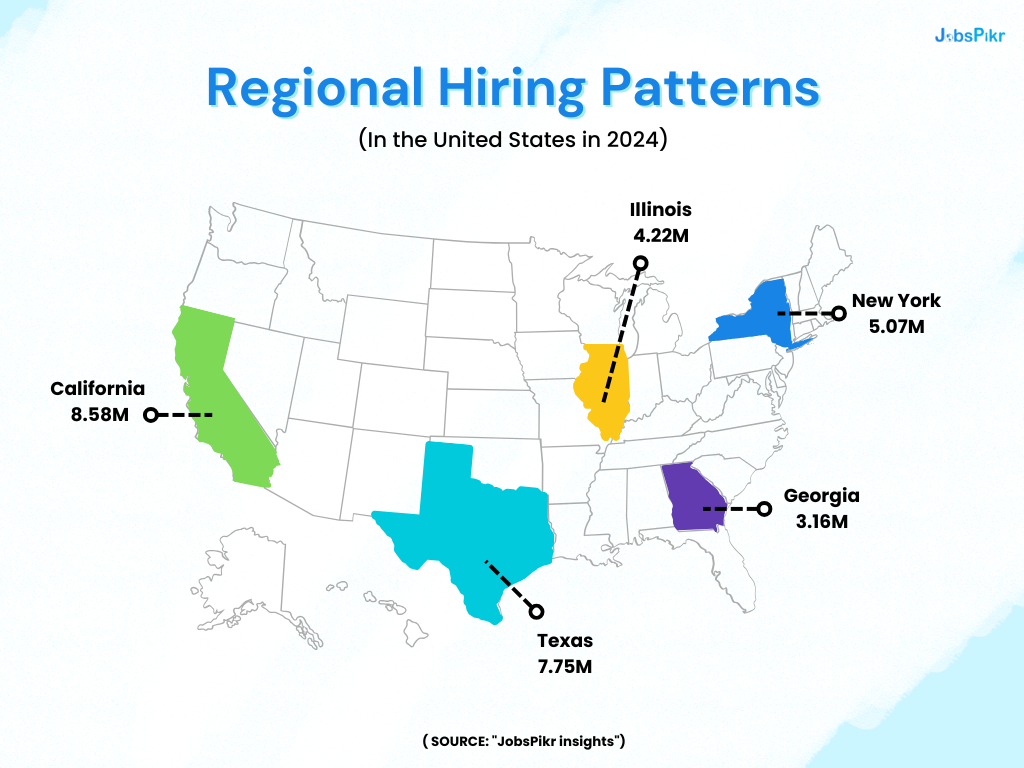The global talent shortage is no longer a distant threat; it is a pressing reality for businesses worldwide. With industries facing challenges in attracting and retaining skilled talent, corporate HR leaders, talent acquisition teams, and investors must rethink their strategies. JobsPikr’s cutting-edge job market analytics offers data-driven insights to help businesses adapt, overcome, and thrive in this talent-scarce environment.
The Current State of the Global Talent Shortage

The numbers reveal the extent of the crisis:
- In the U.S., there are only 0.7 job seekers for every job opening (Bureau of Labor Statistics, October 2023).
- 75% of employers globally report difficulty filling roles (Manpower, 2024).
- The World Economic Forum predicts that 54% of the global workforce will need to update or replace their skills to stay relevant by 2025.
- 68% of HR leaders admit their sourcing efforts fail to identify enough critical talent (Gartner, 2024).
This shortage has led to a hyper-competitive talent market, forcing companies to innovate their workforce strategies or risk falling behind.
Regional Hiring Patterns in the United States

Understanding regional hiring dynamics is crucial to addressing the talent shortage. As of 2024, the states with the highest job openings in the U.S. are:
- California: 8.58 million job openings
- Texas: 7.75 million job openings
- New York: 5.07 million job openings
- Illinois: 4.22 million job openings
- Georgia: 3.16 million job openings
These states highlight hotspots for job demand, emphasizing the need for localized recruitment strategies and workforce planning.
Challenges Businesses Face Due to Talent Shortages
- Skill Gaps in Emerging Industries
The rapid evolution of technology has created significant skill gaps in industries like IT, AI, and healthcare. Businesses struggle to find professionals with expertise in these high-demand areas. - Reduced Workforce Mobility
Post-pandemic, many professionals have prioritized remote or hybrid work models, limiting their willingness to relocate for job opportunities. - Competitive Hiring Market
The imbalance between demand and supply has intensified competition, driving up wages and employee benefits, further straining corporate budgets.
How JobsPikr Empowers Businesses to Overcome Talent Shortages
JobsPikr provides actionable insights through advanced job market analytics, helping businesses navigate the complexities of the talent shortage.
1. Identifying Regional Hiring Patterns
JobsPikr enables companies to map where talent demand is highest. For example, states like California and Texas account for significant portions of U.S. job openings. Businesses can use this data to target recruitment campaigns in these regions, ensuring maximum reach and efficiency.
2. Pinpointing Critical Skill Shortages
With real-time data on job postings, JobsPikr helps organizations identify roles and skills in short supply. For instance, trends show a growing demand for professionals skilled in AI, cybersecurity, and data science. Armed with this information, businesses can tailor job descriptions, benefits, and training programs to attract these specialists.
3. Understanding Talent Migration Trends
JobsPikr’s data analytics provides insights into talent mobility between regions and industries. This helps companies predict workforce migration patterns and adjust their recruitment strategies accordingly.
4. Competitive Benchmarking
JobsPikr also allows businesses to benchmark their recruitment efforts against competitors, ensuring they remain attractive to top talent by offering competitive compensation and benefits.
Practical Insights for HR Leaders and Investors
For HR Leaders and Talent Acquisition Teams
- Align Recruitment with Data: Focus efforts on regions with high job openings and invest in building pipelines for in-demand skills.
- Upskilling and Reskilling: Partner with learning platforms to provide employees with opportunities to enhance their skills, ensuring workforce resilience.
- Embrace Flexible Work Models: Offer remote and hybrid work options to attract a broader talent pool.
For Investors
- Identify Growth Opportunities: Use data to pinpoint industries and regions poised for growth or disruption due to talent shortages.
- Invest in Workforce Technology: Support innovative HR tech solutions like JobsPikr that address recruitment challenges.
The Role of Data Analytics in Workforce Planning
Data-driven decision-making is no longer optional; it is a business imperative. By leveraging real-time job market analytics, companies can gain:
- Foresight into Talent Trends: Anticipate future demand for skills and roles.
- Enhanced Recruitment ROI: Target efforts in regions and industries with the best talent pools.
- Improved Workforce Agility: Adapt quickly to shifts in talent supply and demand.
Conclusion
The global talent shortage will remain a challenge for the foreseeable future. However, businesses equipped with real-time insights from JobsPikr can proactively adapt their strategies to attract, retain, and develop top talent.
Whether you’re an HR leader seeking to strengthen your recruitment efforts or an investor looking to understand workforce trends, JobsPikr’s data analytics is your gateway to staying competitive in a talent-scarce world. Sign up today!


